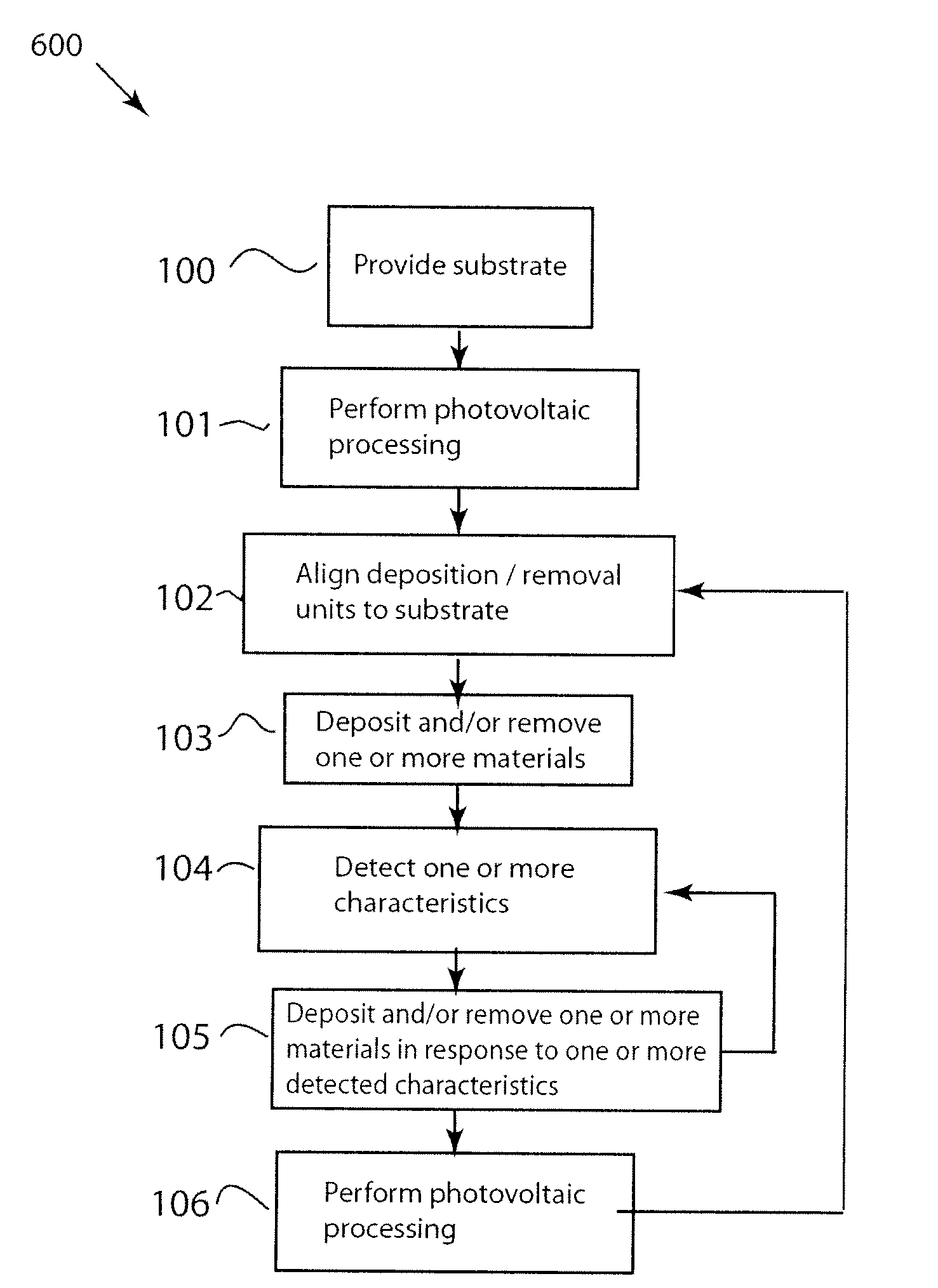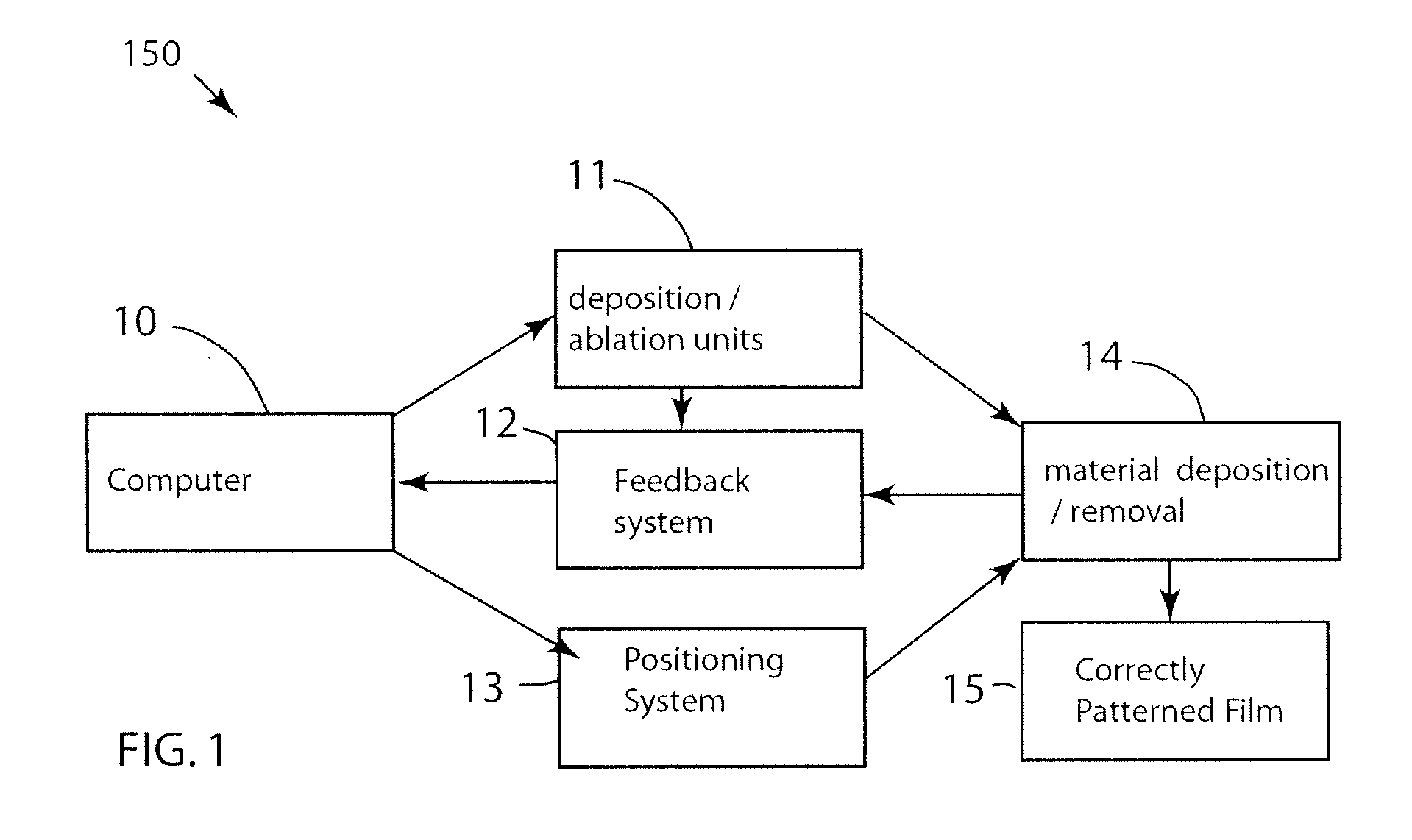Systems and methods for depositing patterned materials for solar panel production
- Summary
- Abstract
- Description
- Claims
- Application Information
AI Technical Summary
Benefits of technology
Problems solved by technology
Method used
Image
Examples
Embodiment Construction
[0022]The present invention is directed to material deposition. More particularly, the invention provides systems and methods for depositing material with predetermined characteristics. Merely by way of example, the invention has been applied to making photovoltaic devices. But it would be recognized that the invention has a much broader range of applicability.
[0023]FIG. 1 is a simplified diagram showing a method for depositing one or more materials for photovoltaic cells according to one embodiment of the present invention. This diagram is merely an example, which should not unduly limit the scope of the claims. One of ordinary skill in the art would recognize many variations, alternatives, and modifications.
[0024]For example, the method 150 as shown in FIG. 1 deposits the one or more materials with or without predetermined patterns. In another example, the method 150 uses a feedback to detect film defects, and / or uses one or more deposition and / or removal processes to repair these...
PUM
 Login to View More
Login to View More Abstract
Description
Claims
Application Information
 Login to View More
Login to View More - R&D
- Intellectual Property
- Life Sciences
- Materials
- Tech Scout
- Unparalleled Data Quality
- Higher Quality Content
- 60% Fewer Hallucinations
Browse by: Latest US Patents, China's latest patents, Technical Efficacy Thesaurus, Application Domain, Technology Topic, Popular Technical Reports.
© 2025 PatSnap. All rights reserved.Legal|Privacy policy|Modern Slavery Act Transparency Statement|Sitemap|About US| Contact US: help@patsnap.com



